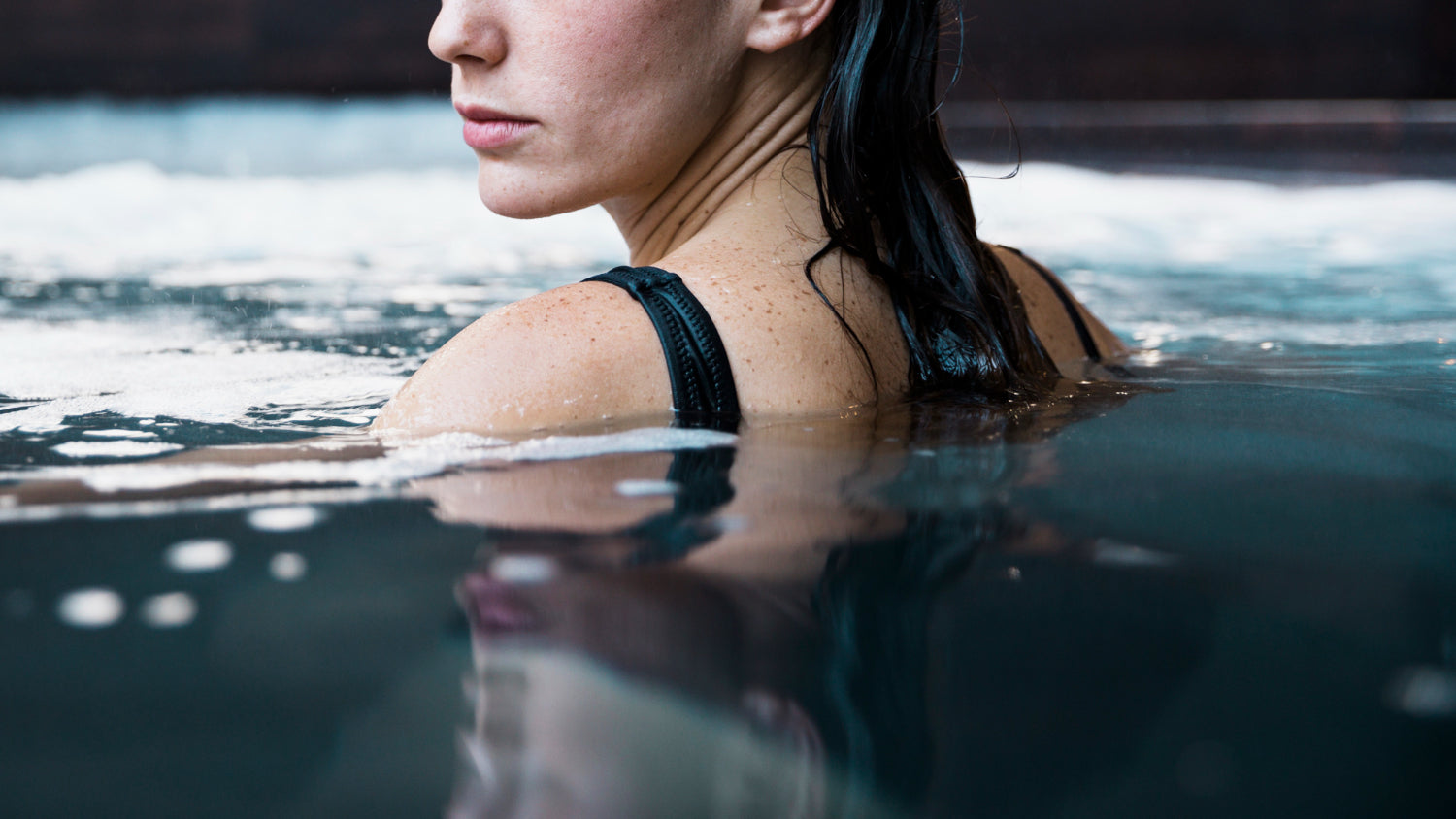Ever notice how regular swim sessions can leave your hair feeling rough or looking dull? Chlorine, used to keep pools safe, actually clings to your hair. The result? Dryness, a lackluster look, and brittleness.
But it doesn’t have to be that way. Welcome to the blog that will show you how to care for your hair before, during, and after each swim with the right chlorine shampoo and a few protective habits.
How Does Chlorine Affect Your Hair?
Chlorine, commonly used in pools to keep the water clean, unfortunately, isn’t as friendly to our hair, especially for certain types that are more vulnerable to its effects. Let’s look at which hair types suffer the most damage from frequent exposure to chlorinated water and why.
- Fine or Thin Hair. Thin hair is naturally more delicate and lacks structural strength. Because it’s often more porous, it absorbs chlorine readily, leading to dryness and a higher chance of split ends after just a few swims. Protecting fine hair with pre-swim treatments can create a barrier that minimizes chlorine penetration.
- Dyed or Color-Treated Hair. The coloring process alters hair’s natural structure, making it more porous and susceptible to chemical absorption, which is why chlorine can accelerate color fading. Hydrating conditioners or color-protective shampoos help maintain color vibrancy and minimize chlorine buildup.
- Bleached or Lightened Hair. Bleached hair is vulnerable due to the aggressive chemicals used to lighten it. Chlorine exposure can worsen this fragility, leaving strands feeling dry and straw-like. Additionally, it may take on unwanted green or yellowish hues after swimming. To protect bleached hair, use a clarifying shampoo occasionally to remove chlorine residues, followed by a hydrating mask to restore moisture.

Dry Hair. Naturally dry hair already lacks sufficient moisture, making it more vulnerable to frizz, breakage, and split ends when exposed to chlorine. People with dry hair may benefit from applying moisturizing masks and oils before swimming, as these provide a protective layer that seals in existing moisture and limits chlorine penetration. Regular deep conditioning treatments also restore softness and enhance shine over time.
Effects of Chlorine on Swimmers' Hair
- Loss of Natural Oils: One of chlorine’s primary effects is the removal of the natural oils that keep hair smooth and hydrated. This causes dryness, roughness, more tangling, a straw-like texture, and a dull appearance, something noticeable in swimmers who skip protective measures before and after swimming sessions.
- Increased Brittleness and Breakage: With continued exposure, the hair shaft’s integrity diminishes, causing more frequent split ends and brittleness. Swimmers who are frequently in chlorinated water notice greater breakage compared to occasional swimmers, particularly those with chemically treated or fine hair.
- Scalp Irritation and Dryness: Chlorine affects not just the hair strands but also the scalp. Spending long periods in chlorinated water often leads to dryness, flakiness, or itchiness. This irritation disrupts healthy hair growth and results in increased shedding.
- Color and Tone Changes: As noted earlier, color-treated hair, particularly blonde or lightened shades, may react with minerals like copper in chlorinated water. When these minerals oxidize and attach to the hair, they create a green or yellowish tint. This unwanted discoloration is a common concern among blonde swimmers and can also alter darker tones.
- Porosity and Moisture Retention Issues: With regular exposure to chlorine, hair porosity increases as the cuticles expand and allow more water to seep in. This change makes moisture retention challenging, and over time, hair may have difficulty holding onto any hydration from products.

How Can You Protect Your Hair from Damage Due to Chlorine Exposure?
Swimmers and regular pool-goers can take a few preventive steps to protect their hair from chlorine exposure. Here are some effective tips to keep your hair safe:
Rinse Your Hair Before and After Swimming
Rinsing your hair with fresh water before entering the pool reduces how much chlorinated water it can absorb. Hair acts like a sponge, so pre-wetting limits chlorine penetration. After swimming, rinse thoroughly with clean water to remove any chlorine left behind.
Apply Natural Oils
Natural oils, such as coconut or olive oil, create a protective layer around hair strands. This barrier helps prevent deep chlorine absorption and keeps moisture locked in. Coconut oil, in particular, is high in fatty acids that support the hair’s natural protein structure, adding extra strength.
Wear a Swim Cap
For frequent swimmers, a well-fitted silicone swim cap provides substantial protection. Although not completely waterproof, it greatly limits the amount of water reaching your hair. For the best effect, wet your hair and apply a leave-in conditioner or oil before putting on the cap.
Incorporate Post-Swim Hair Care
After leaving the pool, proper hair care is essential. Allow your hair to air dry instead of using heat, which can worsen chlorine damage. Use a wide-tooth comb to gently detangle to avoid breakage.
Use Shampoos to Remove Chlorine
Choose a shampoo to remove chlorine with active ingredients to combat dryness, protect color, and neutralize odors. Alternating with a hydrating shampoo and conditioner helps maintain balanced moisture levels.
Keep Your Hair Healthy and Damage-Free
Incorporating a quality swimmer’s shampoo into your routine is essential. Unlike typical products, these shampoos are designed to break down and remove chlorine, salt, and other chemicals that linger after swimming.
Following up with a deep conditioner or a weekly hair mask provides further protection, restoring moisture lost to chlorine and strengthening strands against brittleness. Applying a protective oil or leave-in conditioner before swimming also creates a barrier to reduce chlorine absorption and adds extra hydration.
For those who swim regularly, skincare is equally important. Chlorine affects the skin just as much as a hair, so with an effective skincare routine for athletes, you can fully enjoy your time in the pool!
You may be interested in:
